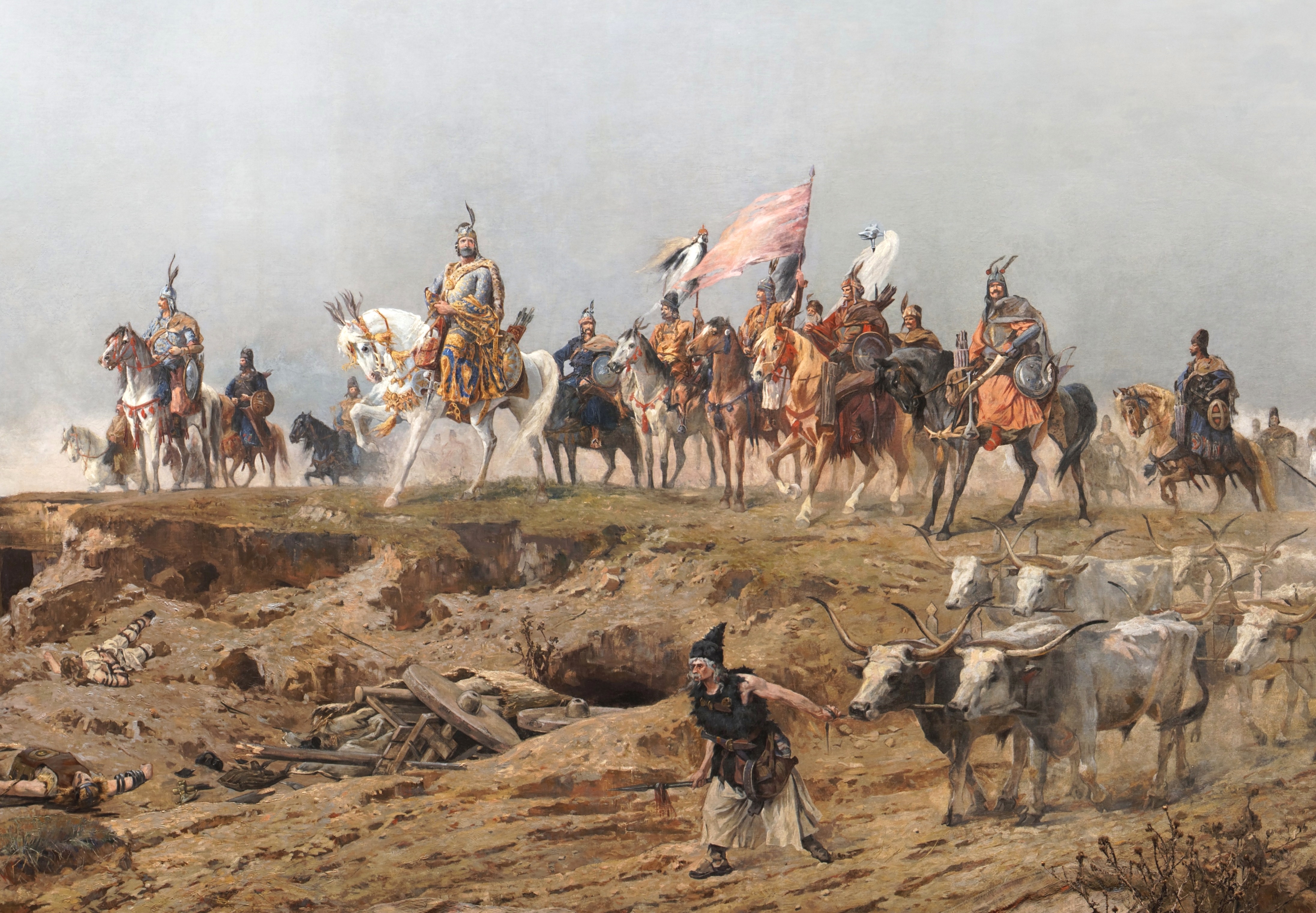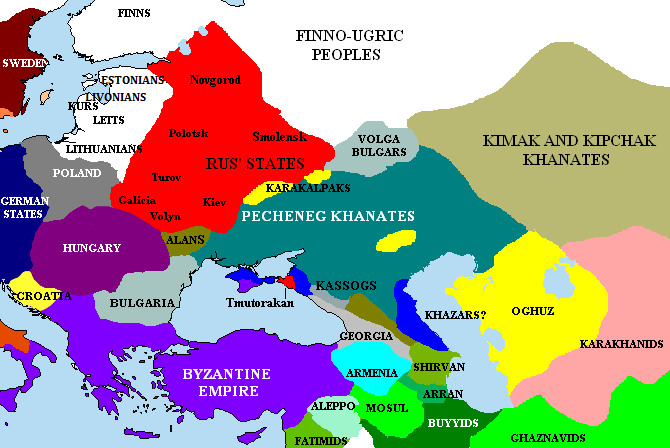|
List Of Tengrist States And Dynasties
This is a list of khanates, empires and kingdoms who predominantly followed Tengrism, a Central Asian shamanistic religion. * Xiongnu (209 BCE–93 CE) * Xianbei state (93BCE–234) * Rouran Khaganate (330–555) * Huns (370s–469) "There is no doubt that between the 6th and 9th centuries Tengrism was the religion among the nomads of the steppes" Yazar András Róna-Tas, ''Hungarians and Europe in the early Middle Ages: an introduction to early Hungarian history'', Yayıncı Central European University Press, 1999, , p. 151 * First Turkic Khaganate (552–659) * Old Great Bulgaria (632–668) * Volga Bulgaria (7th century–922) * Khazar Khaganate (650–740) * First Bulgarian Empire (681–864) * Second Turkic Khaganate (682–744) * Tatar confederation (8th century-1202) * Uyghur Khaganate (744–840) * Oghuz Yabgu State (766–1055) * Kara-Khanid Khanate (840–934) * Pecheneg Khanates (860-1091) * Principality of Hungary (895–1000) * Cumans * Cumania (10th cen ... [...More Info...] [...Related Items...] OR: [Wikipedia] [Google] [Baidu] |
Tengrism
Tengrism (also known as Tengriism, Tengerism, or Tengrianism) is an ethnic and old state Turkic peoples, Turko-Mongolic peoples, Mongolic religion originating in the Eurasian Steppe, Eurasian steppes, based on folk shamanism, animism and generally centered around the titular sky god Tengri. Tengri was not considered a deity in the usual sense, but a personification of the universe. The purpose of life is, according to the Tengris view, to live in harmony with the universe. It was the prevailing religion of the Turks, Mongols, Bulgars, Xiongnu, Huns and possibly the Hungarians, and the state religion of several medieval states: First Turkic Khaganate, Western Turkic Khaganate, Eastern Turkic Khaganate, Old Great Bulgaria, First Bulgarian Empire, Volga Bulgaria, and Khazaria, Eastern Tourkia (Khazaria), Mongol Empire. In ''Irk Bitig'', a ninth century manuscript on divination, Tengri is mentioned as (God of Turks). According to many academics, Tengrism was a predominantly polyth ... [...More Info...] [...Related Items...] OR: [Wikipedia] [Google] [Baidu] |
Uyghur Khaganate
The Uyghur Khaganate (also Uyghur Empire or Uighur Khaganate, self defined as Toquz-Oghuz country; otk, 𐱃𐰆𐰴𐰕:𐰆𐰍𐰕:𐰉𐰆𐰑𐰣, Toquz Oγuz budun, Tang-era names, with modern Hanyu Pinyin: or ) was a Turkic empire that existed for about a century between the mid 8th and 9th centuries. They were a tribal confederation under the Orkhon Uyghur () nobility, referred to by the Chinese as the ''Jiu Xing'' ("Nine Clans"), a calque of the name ''Toquz Oghuz'' or ''Toquz Tughluq''. History Rise In 657, the Western Turkic Khaganate was defeated by the Tang dynasty, after which the Uyghurs defected to the Tang. Prior to this the Uyghurs had already shown an inclination towards alliances with the Tang when they fought with them against the Tibetan Empire and Turks in 627. In 742, the Uyghurs, Karluks, and Basmyls rebelled against the Second Turkic Khaganate. In 744, the Basmyls captured the Turk capital of Ötüken and killed the reigning Özmiş Khagan. Later t ... [...More Info...] [...Related Items...] OR: [Wikipedia] [Google] [Baidu] |
Mongol Empire
The Mongol Empire of the 13th and 14th centuries was the largest contiguous land empire in history. Originating in present-day Mongolia in East Asia, the Mongol Empire at its height stretched from the Sea of Japan to parts of Eastern Europe, extending northward into parts of the Arctic; eastward and southward into parts of the Indian subcontinent, attempted invasions of Southeast Asia and conquered the Iranian Plateau; and westward as far as the Levant and the Carpathian Mountains. The Mongol Empire emerged from the unification of several nomadic tribes in the Mongol homeland under the leadership of Temüjin, known by the more famous title of Genghis Khan (–1227), whom a council proclaimed as the ruler of all Mongols in 1206. The empire grew rapidly under his rule and that of his descendants, who sent out invading armies in every direction. The vast transcontinental empire connected the East with the West, and the Pacific to the Mediterranean, in an enforced ''Pax Mongol ... [...More Info...] [...Related Items...] OR: [Wikipedia] [Google] [Baidu] |
Merkits
The Merkit (literally ''"skillful/wise ones"''; mn, ᠮᠡᠷᠬᠢᠳ ; Мэргид, translit=, Mergid; ) was one of the five major tribal confederations (''khanlig'') of probably Mongol Jeffrey Tayler. Murderers in Mausoleums: Riding the Back Roads of Empire Between Moscow and Beijing. — Houghton Mifflin Harcourt, 2009. — p. 1. — .Bertold Spuler. The Mu ... [...More Info...] [...Related Items...] OR: [Wikipedia] [Google] [Baidu] |
Khamag Mongol
Khamag Mongol ( mn, Хамаг монгол, Khamag mongol, lit=the whole Mongol; ) was a major Mongolic tribal confederation (khanlig) on the Mongolian Plateau in the 12th century. It is sometimes considered to be a predecessor state to the Mongol Empire. The existence of a somewhat mysterious tribal power known in Mongol tradition as ''Khamag Mongol Uls'' is recorded in sources of the Khitan-led Liao dynasty. After the fall of Liao dynasty in 1125, the Khamag Mongols began to play an important role on the Mongolian plains.Histoire de la Mongolie By László Lőrincz, p. 43. They occupied one of the most fertile lands of the country, the basins of the river Onon, Kherlen and Tuul Rivers in the Khentii Mountains. The Taichiud (Cyrillic: Тайчууд) was one of the three core tribes in the Khamag Mongol Khanate of Mongolia during the 12th century and whose people lived in the southern part of Siberia's modern-day Zabaykalsky Krai. The present-day Zabaykalsky Krai of Ru ... [...More Info...] [...Related Items...] OR: [Wikipedia] [Google] [Baidu] |
Taichiud
The Tayichiud (Mongolian Cyrillic: Тайчууд, Taichuud) was one of the three core tribes of the Khamag Mongol confederation on the Mongolian Plateau during the 12th century, founded by Ambaghai Khan in 1148 CE, and finally ended with Sultan Husayn Tayichud in 1405 AD. Tribal arrangements They lived in the southern part of current Zabaykalsky Krai and the Mongolian Dornod Province. Though the Khiyad Borjigids and the Tayichiuds were closely related and shared a common ancestor in Bodonchar Munkhag, at times they were arch-rivals for the rule of the Khamag Mongol. Though Khabul Khan of the Borjigin had 7 sons, he had designated Ambaghai, a son of Sengum Bilge of the Tayichiud, as his successor. Thus Ambaghai Khan became the second khan of the Khamag Mongol. The rule of the Mongols had alternated between the Borjigid and the Tayichiud tribes, finally coming into the hands of Genghis Khan of Borjigid. Role The Tayichiud were rivals of the Naimans and several other trib ... [...More Info...] [...Related Items...] OR: [Wikipedia] [Google] [Baidu] |
Cumania
The name Cumania originated as the Latin exonym for the Cuman–Kipchak confederation, which was a tribal confederation in the western part of the Eurasian Steppe, between the 10th and 13th centuries. The confederation was dominated by two Turkic people, Turkic nomadic tribes: the Cumans (also known as the Polovtsians or ''Folban'') and the Kipchaks. Cumania was known in Islamic sources as ''Desht-i Qipchaq'', which means "Steppe of the Kipchaks"; or "foreign land sheltering the Kipchaks", in Persian language, Persian and ''al-Qumāniyīn'' in Arabic. Russian sources have referred to Cumania as the "Polovtsian Steppe" (''Polovetskaia Step''), or the "Polovtsian Plain" (''Pole Polovetskoe''). A different, more organized entity that came later known as the Golden Horde was also referred to as "Comania" by Armenian chronicler Hethum (Hayton) of Korykos. "Cumania" was also the source of names, or alternate names, for several smaller areas – some of them unconnected geographically ... [...More Info...] [...Related Items...] OR: [Wikipedia] [Google] [Baidu] |
Cumans
The Cumans (or Kumans), also known as Polovtsians or Polovtsy (plural only, from the Russian language, Russian Exonym and endonym, exonym ), were a Turkic people, Turkic nomadic people comprising the western branch of the Cuman–Kipchak confederation. After the Mongol invasion of Rus', Mongol invasion (1237), many sought Right of asylum, asylum in the Kingdom of Hungary, as many Cumans had settled in Hungary, the Second Bulgarian Empire playing an important role in the development of the state. Cumans played also an important role in (The Byzantine Empire, the Latin Empire, and the Empire of Nicaea, Nicaea Empire) Anatolia . Related to the Pecheneg, they inhabited a shifting area north of the Black Sea and along the Volga River known as Cumania, from which the Cuman–Kipchaks meddled in the politics of the Caucasus and the Khwarazmian Empire. The Cumans were fierce and formidable nomadic warriors of the Eurasian Steppe who exerted an enduring influence on the medieval Balkans. ... [...More Info...] [...Related Items...] OR: [Wikipedia] [Google] [Baidu] |
Principality Of Hungary
The (Grand) Principality of HungaryS. Wise BauerThe history of the medieval world: from the conversion of Constantine to the First Crusade W. W. Norton & Company, 2010, p. 586George H. HodosThe East-Central European region: an historical outline Greenwood Publishing Group, 1999, p. 19 or Duchy of Hungary ( hu, Magyar Nagyfejedelemség: "Hungarian Grand Principality" Byzantine gr, Τουρκία) was the earliest documented Hungarian state in the |
Pechenegs
The Pechenegs () or Patzinaks tr, Peçenek(ler), Middle Turkic: , ro, Pecenegi, russian: Печенег(и), uk, Печеніг(и), hu, Besenyő(k), gr, Πατζινάκοι, Πετσενέγοι, Πατζινακίται, ka, პაჭანიკი, bg, печенеги, pechenegi, bg, печенези, ; sh-Latn-Cyrl, Pečenezi, separator=/, Печенези, la, Pacinacae, Bisseni were a semi-nomadic Turkic ethnic people from Central Asia who spoke the Pecheneg language which belonged to the Oghuz branch of the Turkic language family. Ethnonym The Pechenegs were mentioned as ''Bjnak'', ''Bjanak'' or ''Bajanak'' in medieval Arabic and Persian texts, as ''Be-ča-nag'' in Classical Tibetan documents, and as ''Pačanak-i'' in works written in Georgian. Anna Komnene and other Byzantine authors referred to them as ''Patzinakoi'' or ''Patzinakitai''. In medieval Latin texts, the Pechenegs were referred to as ''Pizenaci'', ''Bisseni'' or ''Bessi''. East Slavic peo ... [...More Info...] [...Related Items...] OR: [Wikipedia] [Google] [Baidu] |
Kara-Khanid Khanate
The Kara-Khanid Khanate (; ), also known as the Karakhanids, Qarakhanids, Ilek Khanids or the Afrasiabids (), was a Turkic khanate that ruled Central Asia in the 9th through the early 13th century. The dynastic names of Karakhanids and Ilek Khanids refer to royal titles with Kara Khagan being the most important Turkic title up until the end of the dynasty. The Khanate conquered Transoxiana in Central Asia and ruled it between 999 and 1211. Their arrival in Transoxiana signaled a definitive shift from Iranian to Turkic predominance in Central Asia, yet the Kara-khanids gradually assimilated the Perso-Arab Muslim culture, while retaining some of their native Turkic culture. The capitals of the Kara-Khanid Khanate included Kashgar, Balasagun, Uzgen and Samarkand. In the 1040s, the Khanate split into the Eastern and Western Khanates. In the late 11th century, they came under the suzerainty of the Seljuk Empire, followed by the Qara Khitai (Western Liao dynasty) in the mid-1 ... [...More Info...] [...Related Items...] OR: [Wikipedia] [Google] [Baidu] |
Oghuz Yabgu State
The Oghuz Yabgu State (Oghuz il, meaning Oghuz Land, Oghuz Country, 750–1055) was a Turkic state, founded by Oghuz Turks in 766, located geographically in an area between the coasts of the Caspian and Aral Seas. Oghuz tribes occupied a vast territory in Kazakhstan along the Irgiz, Yaik, Emba, and Uil rivers, the Aral Sea area, the Syr Darya valley, the foothills of the Karatau Mountains in Tien-Shan, and the Chui River valley (see map). The Oghuz political association developed in the 9th and 10th centuries in the basin of the middle and lower course of the Syr Darya and adjoining the modern western Kazakhstan steppes. Etymology The etymology of the name " Oghuz" is unclear. It was discussed many times in historical and philological literature. The term probably means "tribes", or the "tribal union", and then could turn into a collective ethnic name. The original Oghuz areas were the south-eastern regions of Central Asia. The beginning of the early Oghuz group formation i ... [...More Info...] [...Related Items...] OR: [Wikipedia] [Google] [Baidu] |






